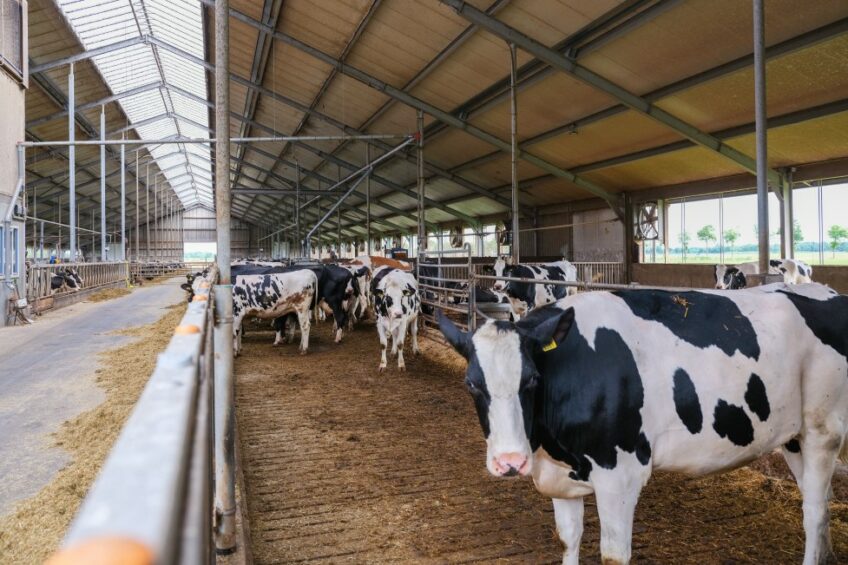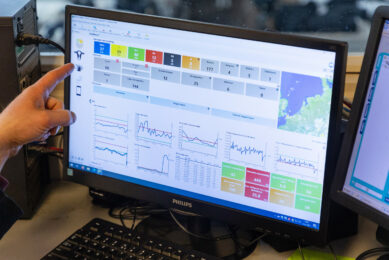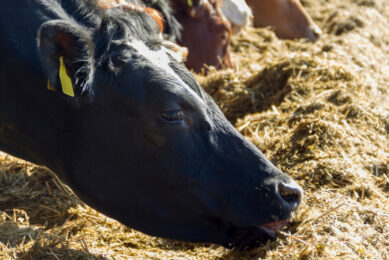Sensors for real-time monitoring of a cow’s rumen

Researchers associated with 3 different universities merged minds to look at the various microsensor technologies applicable to real-time metabolic monitoring of the rumen.
Today, technology is a fast-moving field to the extent that if innovations are not promptly shared or relayed, they can easily be left behind. To better understand the temporal and spatial dynamics of the rumen environment, real-time and in situ monitoring of various chemical and physical parameters in the rumen through implantable microsensor technologies is a practical solution. Sensors could contribute to the next generation of precision livestock farming, provided sufficient wireless data networking and computing systems are incorporated.
In a recently published study, researchers introduced various microsensor technologies applicable to real-time metabolic monitoring of the rumen. The research team is associated with Pennsylvania State University, Purdue University and Virginia Tech University.
Monitoring rumen pH
Monitoring ruminal pH is beneficial to avoid subacute ruminal acidosis (SARA). Most commercial boluses use conventional glass membrane electrode-based pH sensors. These glass membrane electrodes are large and bulky, break easily, are difficult to miniaturise and are slow in response. Moreover, they require regular maintenance, such as calibration and refilling of the reference buffer solution. The researchers pointed out 3 recent advances in microscale pH sensors suitable for in vivo rumen pH monitoring.
Potentiometric sensors
Potentiometric sensors have been most widely used for measuring the pH of solutions due to their simple configuration, small size and fast response time. A typical potentio metric sensor consists of 2 electrodes: the working electrode (sensing electrode) and the reference electrode.
ISFET-based pH sensors
Ion-sensitive field-effect transistor (ISFET)-based pH sensors measure the pH of a solution through an ion-sensitive membrane and the field-sensing characteristic of a transistor. Although ISFET-based pH sensors have many advantages, such as small size, robustness and easy storage without many necessary conditions (e.g., low measurement bias at extreme pH and low-temperature dependence), they are difficult to use for in vivo monitoring because they must be encapsulated.
EGFET-based pH
Extended gate field-effect transistor (EGFET)-based pH sensors were introduced as an alternative to ISFET-based sensors. The sensing membrane in the ISFET-based pH sensor is the gate dielectric layer, so that it must be an insulator, defect-free and of high impedance, whereas the sensing membrane in the EGFET-based pH sensor must be fabricated using a low-impedance material for high conductivity and sensitivity – rumen environment does not negatively influence a low-impedance material, therefore, there is more value in EGFET sensors.
The team concluded that “the potential impact of real-time pH monitoring as a tool to improve cattle health management is mainly limited by the translation of effectively sensed data into actionable decisions or management recommendations”. They added that due to fluctuations in ruminal pH, integration of analytics with other sensed parameters may be essential to convert real-time sensed pH measurements into an effective diagnostic or management tool.
Rumen motility
Monitoring the rate and amplitude of ruminal contractions, called motility, is one of the pathways to diagnose metabolic diseases such as ruminal acidosis and hypocalcaemia, among others. Rumen motility has generally been evaluated using strain gauge-based force transducers or ultrasonography methods. The disadvantage is that the force transducer requires a surgical procedure, while the ultrasound limits continuous measurements over longer periods as it must be held against the animal’s body.
To monitor rumen motility more simply and over a longer period, bolus-type wireless sensor nodes with a 3-axis accelerometer have been developed and are more suitable for the early detection of rumen dysfunctions such as ruminal atony, ruminal tympany and anorexia.
Body temperature
Rectal thermometers have been widely used for core temperature monitoring; however, this method is time-consuming. Real-time monitoring of body temperature changes in ruminants is an effective method to detect diseases, oestrus and parturition. An example cited by the researchers is the early detection of mastitis using a bolus-type wireless temperature sensor node. The main advantage of using rumen-dwelling sensors is that they can be placed for long periods (years).
According to the researchers, temperature sensors used for core body temperature measurement primarily consist of thermocouples or thermistors. Most of the recent temperature sensors use thermistors for the measurement of temperature, as they are more accurate than thermocouples and do not require continual recalibration, which makes them much more suitable for rumen monitoring. However, the drawback for thermistors is that the output is nonlinear, presenting high complexity in translating sensor output to a numerical temperature value.
Ruminal biomarker concentrations
In this study, researchers focused on histamine as an example to demonstrate some of the opportunities and challenges in biomarker sensing. Ruminal histamine concentrations are of interest for monitoring SARA and other rumen afflictions.
Traditional techniques for histamine detection include thin-layer chromatography, HPLC and GC, fluorometry, capillary zone electrophoresis and ELISA. However, these techniques are expensive and time-consuming and require complex sample pre-treatment, making them impractical for real-time monitoring in the rumen environment.
Electrochemical sensors are a promising alternative due to their high sensitivity, simplicity, fast response and low cost. The main types of electrochemical sensors include:
- Impedimetric sensors;
- Amperometric sensors; and
- Voltammetric sensors.
Metabolite concentrations
The major metabolites of interest are volatile fatty acids (VFAs), the primary energy source for ruminants. Real-time monitoring of the concentration and balance of VFAs helps in understanding the relationship between feed intake and metabolism. Traditional measurement methods include distillation, titration, the Montgomery method, paper chromatography, HPLC and spectrofluorimetry. However, these techniques are inappropriate for real-time monitoring of the rumen environment because of equipment requirements, incompatible output signal types (usually optical signals) and complicated sampling methods. Electrochemical biosensors are among the attractive candidates for potential monitoring of VFAs in the rumen. The 2 main ones highlighted in this study are:
- Microorganism electrochemical biosensors: In microbial electrochemical sensors, the permanent connection of the microbial metabolism and electrode is used to generate an analytical signal.
- Enzymatic electrochemical biosensors: A unique characteristic and advantage of enzymatic electrochemical biosensors is that their biocatalyst reacts only with a specific analyte.
Electrochemical biosensors exhibit excellent selectivity, making them a good target technology for testing strategies to differentiate among VFAs.
Challenges in rumen biosensing
The researchers concluded that, despite marked progress in sensing technologies for important analytes within the rumen, some limitations to current research prototypes and commercial technologies must be addressed before widespread biomonitoring of the rumen environment is feasible. These challenges primarily relate to:
- Sensor size and lifespan;
- Sensor selectivity or durability to environmental interference;
- Stability and repeatability of sensing performance; and
- Interpretation of information obtained from sensors.
* This article is based on the original article by Chan Su Han, Upinder Kaur, Huiwen Bai, Barbara Roqueto dos Reis, Robin White, Robert A. Nawrocki, Richard M. Voyles, Min Gyu Kang, and Shashank Priya. 2022. Invited review: Sensor technologies for real-time monitoring of the rumen environment. Journal of Dairy Science. 105:6379–6404.










